Looking for interesting facts about Scotland? You have come to the right place. Regular readers know my love for facts and trivia.
I bring to you some fun Scotland facts about culture, language, people, history, and food in this post.
We all associate Scotland with spectacular highlands, cliffs, abundant wildlife, Whisky, sheep, and much more. But what about those fun things about Scotland that will blow your mind?
Join me in finding out some interesting things about this beautiful country.
INTERESTING FACTS ABOUT SCOTLAND
CONTENTS
Scotland is the country of castles
- If you plan to go castle hopping, you cannot pick a better country than Scotland (well, maybe after Germany!). There are over three hundred castles in the country, one every hundred square miles, thanks to the clan system integral to Scotland’s culture.
- Edinburgh Castle is the most visited one in the country, with this beautiful hill-top castle attracting millions of visitors every year. Edinburgh Castle was built on Castle Rock late in the 11th century, n top of a 700 million-year-old extinct volcano. Known for its architecture, history, and fabulous views, some say that it is also one of the haunted places in Scotland.
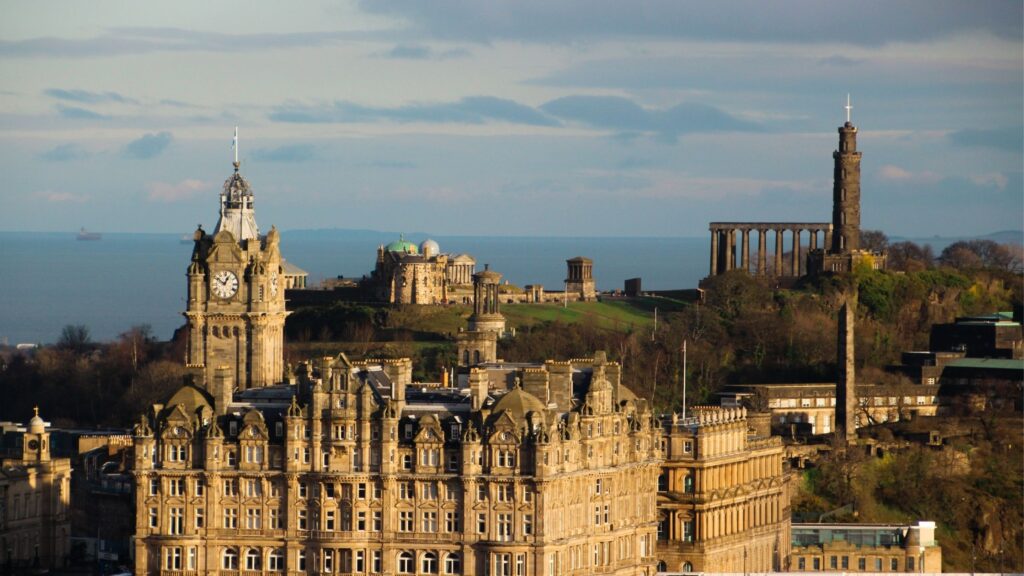
- If you are in Edinburgh castle at One in the noon, you will hear the clock going off, a tradition followed since 1861, never to be missed. The practice originated for a time check for mariners at the city’s seaport.
- Culzean Castle in Ayrshire is another beautiful castle you should visit. Ravenscraig Castle and Park, located atop the headland, offers stunning panoramas of the coast.

- If you are interested in knowing where The Queen Mother grew up, pay a visit to the pretty Glamis Castle in Angus, where Ogilvie’s oldest family name in Scotland originates.
Did You Say Golf?
Scotland is where the game of golf originated during the 15th century, where a game was played using sticks and pebbles. It is also where the oldest golf championship was first played in 1860 at Prestwick Golf Club in Ayrshire.
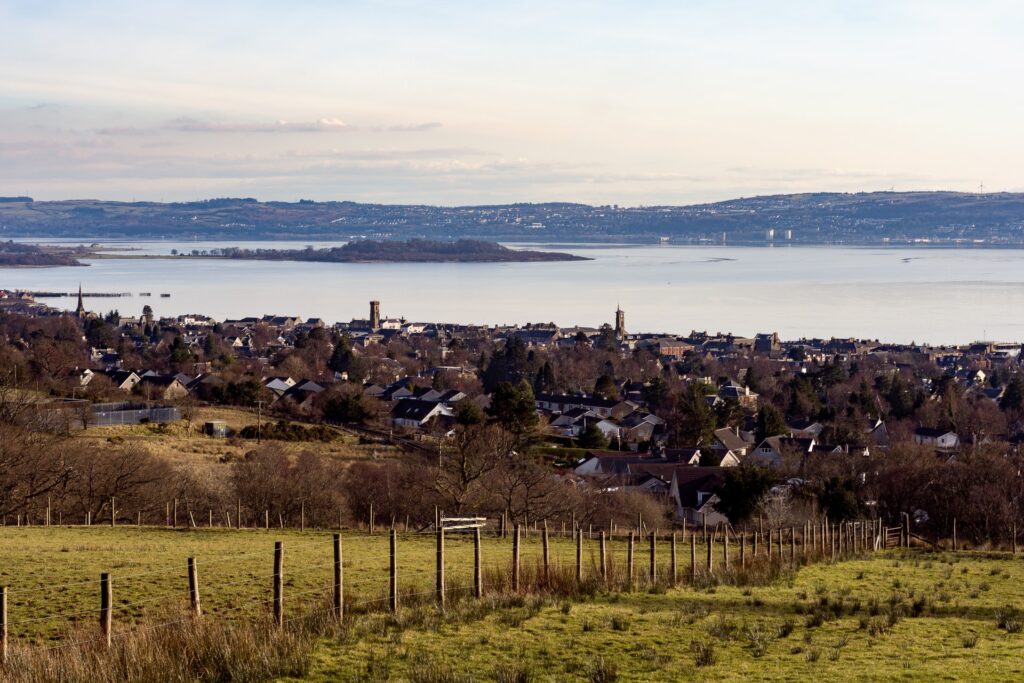
The event was a massive success, resulting in the birth of the British Open Championship, now one of the world’s most famous golfing competitions.
The Birthplace of Sherlock Holmes Author
- Author Arthur Conan Doyle, famous for his Sherlock Holmes novels, was a Scottish citizen. He produced some of his best works in his country.
The Land of Loch Ness Monster
- While whether Loch Ness Monster is actual or fictitious is famous worldwide, it is a serious business in Scotland. Whether you believe it or not, the Loch Ness monster is more than just mythical folklore, with many reported sightings throughout history.
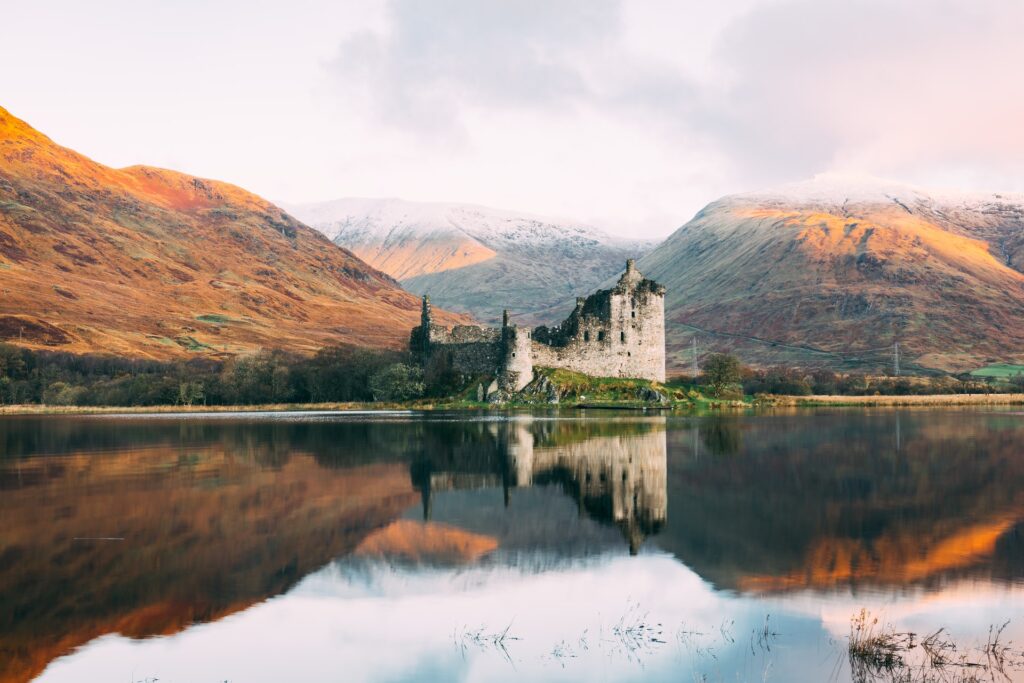
One of the earliest known sightings recorded was in 565 AD. Because there are approximately 263 billion cubic feet of water in Loch Ness, which is more fresh water than all the lakes of England and Wales combined, who knows, there might as well be a monster!
- Scotland houses the second-largest granite building in the world, Marischal College, located in Aberdeen.
- The Royal Botanic Garden in Edinburgh has the most extensive collection of rhododendrons in the world.
FACTS ABOUT SCOTLAND FOOD AND DRINKS
You will love your Scotland trip if you are a foodie at heart. The sumptuous breakfast, the wide range of alcohol, the many mouth-watering traditional Scottish desserts are all going to add something for your holiday weight for sure. Here are some interesting facts about Scotland food you will love.
Haggis is the favourite here
If you are a hardcore meat-eater, you will know about Haggis, a Scottish delicacy prepared from Scottish Sheep.
History of Haggis
- Haggis was initially created for Scottish hunters to store the internal organs of the animals procured from their hunt. Since the hunters would venture deep into the woodlands for more extended periods, they had no way of preserving their food, which led to this encasing of the organs in the animal’s stomach lining.
- One of the interesting Scotland facts about Haggis is that more English consume Haggis in Britain than the Scots, almost up to 60% of the British customers.
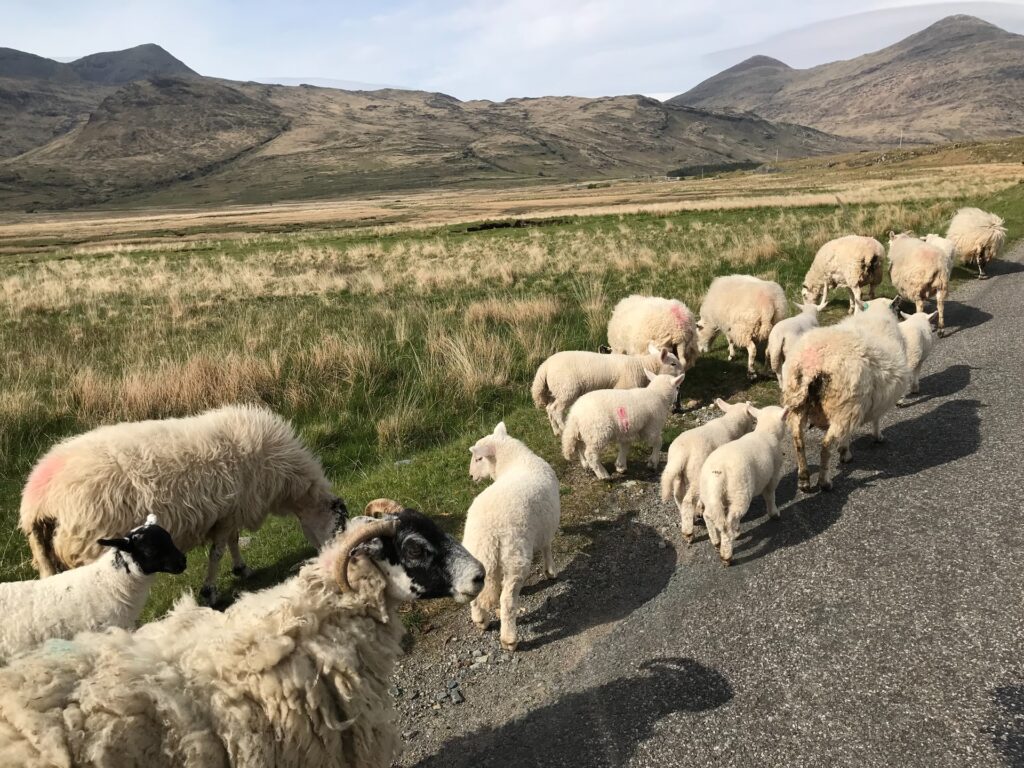
- As registered in the Guinness Book of Records, the biggest ever Haggis was made by Hall’s of Scotland, which weighed 1,010 kg and was nearly 3 metres in length.
- This trendy dish was banned from being exported to the U.S. in the 70s and elsewhere to most countries.
Whiskey lovers, gather!
Here are fun whisky facts about Scotland.
- Scotland is the land of Whiskey. It may be a popular fact, but it is sure exciting. If you are a whiskey lover like me, you will feel like being in paradise.
- It is one of the most significant exported items in Scotland, accounting for nearly 20% of the entire food and drink export market in the United Kingdom.
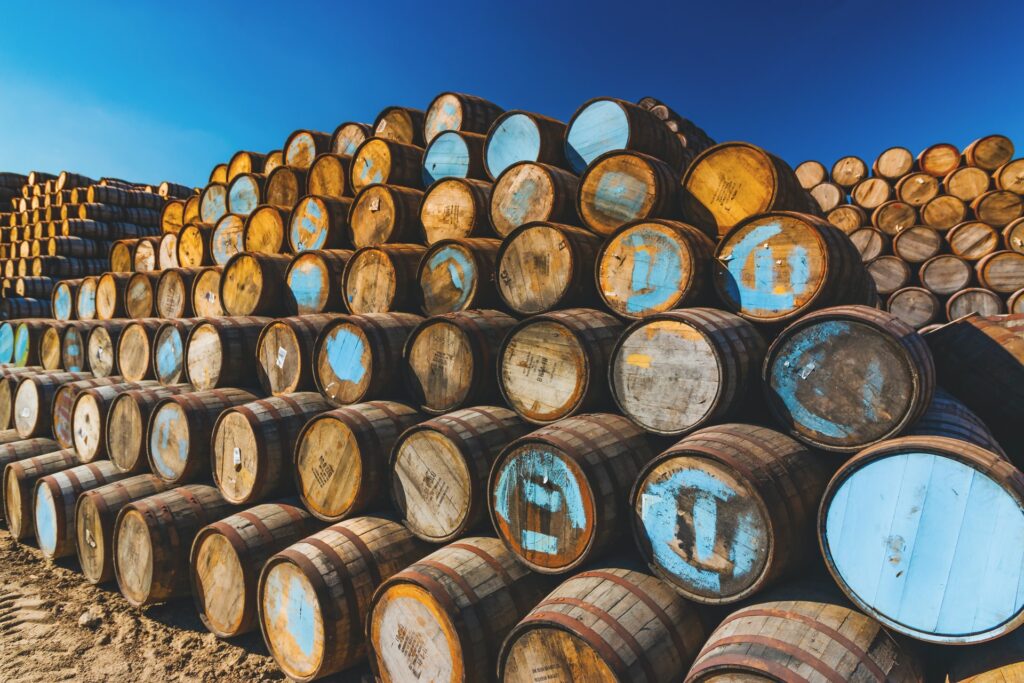
- The country’s regions known for whisky production are Speyside, Highlands, Lowlands, Islands and Campbeltown, home to over 130 distilleries.
- Over 1 billion bottles of Scotch whisky are sold every year.
- The older, the better – Many of the finest Scottish whiskies are aged.
- In the local Gaelic language, Whisky translates into Uisge-Beatha or the “water of life.” Enough said!
Scotland Cows
- The oldest registered breed of cattle in the world is in Scotland, which we famously know as the Highland cows.
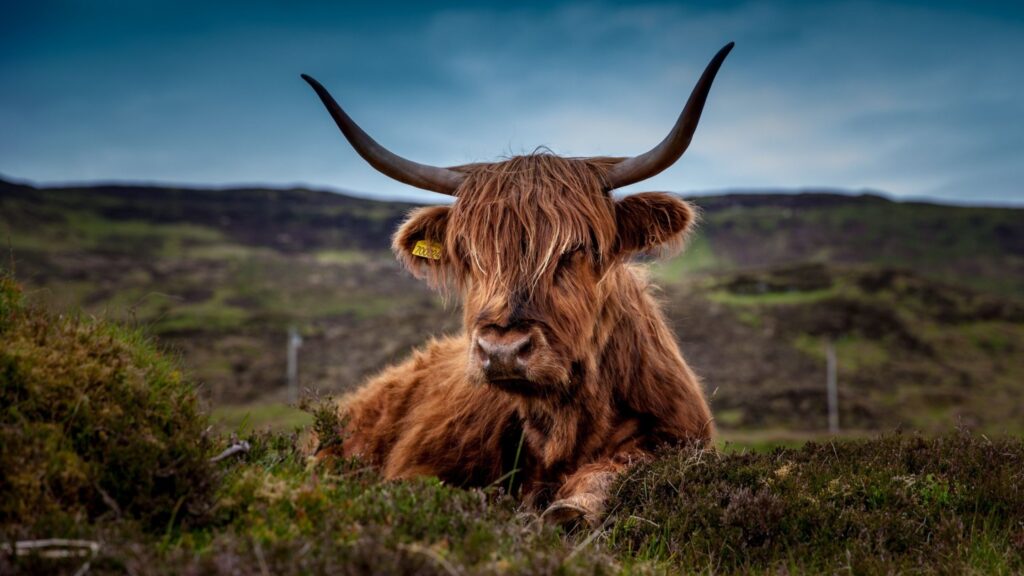
Gin is also Scotland’s Love
- Although most associate Whiskey with Scotland, the country is also a significant producer of Gin, contributing to about 70% of the U.K.’s Gin export and manufacturing.
The Scottish Love Their Breakfast
- If you want to name a big country on breakfasts, Scotland should be on top of the list. They love their breakfast, and they love it big – You will be served with eggs of your choice, baked beans, a special sausage, scones, and beverage – perfect to get on your feet after the whiskey nights.
Scotland is prominent in the exports of fish too
- Thanks to its vast coastlines, Scotland is one of the biggest exporters of Herring fish. For more than a hundred years, the Scots supplied the fish from the North Sea that was abundant to Herring and other species. Mackerel is also another fish in great demand, provided by the Scottish, to regions as far as eastern Asia.
Move over, Veggies
- Between veggies and meat, the latter is what the Scots love. The combined spend on beef and seafood is more than they spend on the vegetables, fruits, and the dairy industry.
A bagpipe is a way to be – love it or hate it

- One of the best things that come to mind when thinking of the interesting facts about Scotland is the Great Highland bagpipe, which is more than another musical instrument. It is the heart of Scottish folk music and culture, and the national instrument of Scotland.
Scottish and their love for Kilts
- The stylish Scottish kilt needs no introduction, and it is one of the best facts about Scotland culture. This knee-long skirt-like garment, considered one of the essential aspects of the local culture, plays a prime role in the lives of Gaelic men and boys in the Scottish Highlands on several occasions. Belonging to the Gaelic origin, kilts are the national dress of Scotland.
- The traditional Scottish clothing, the tartan kilts, are frequently worn by men at weddings, military, or celebrations like Burns Night and Highland games. Also, some wear it regularly, making it the only national dress in the U.K. that’s worn for ordinary purposes.
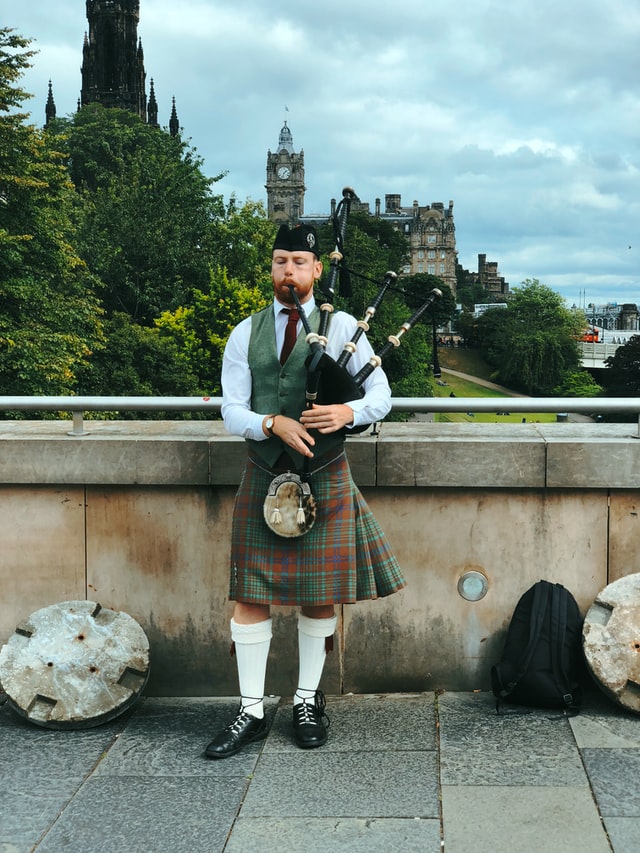
- The kilt was initially a plain 16-foot length of cloth worn around the waist and over the shoulders, with the first records of a kilt going back to 1538.
- While wearing the kilt, men also wear a traditional knife called Sgian-Dubh, traditionally worn in the sock. The origin of knife in the stockings is attractive as well. It began as a practice where friends removed concealed weapons and made them visible as a sign of trust when they met and greeted first.
- Also, Scots can identify the men and their respective clans by the knitting pattern in their kilt.
William Wallace is regarded as the hero of Scotland.
The revolt of the Scottish against the English goes way back, and the past is filled with blood, tears, wars, and agony, something which the Scottish regard with pride even to this day. One of the interesting facts about Scotland that need to be mentioned is about William Wallace.
You will often hear his name among the many brave Scottish souls because he is considered Scotland’s most influential historical hero. He was a Scottish knight who became one of the foremost leaders during the First War of Scottish Independence.
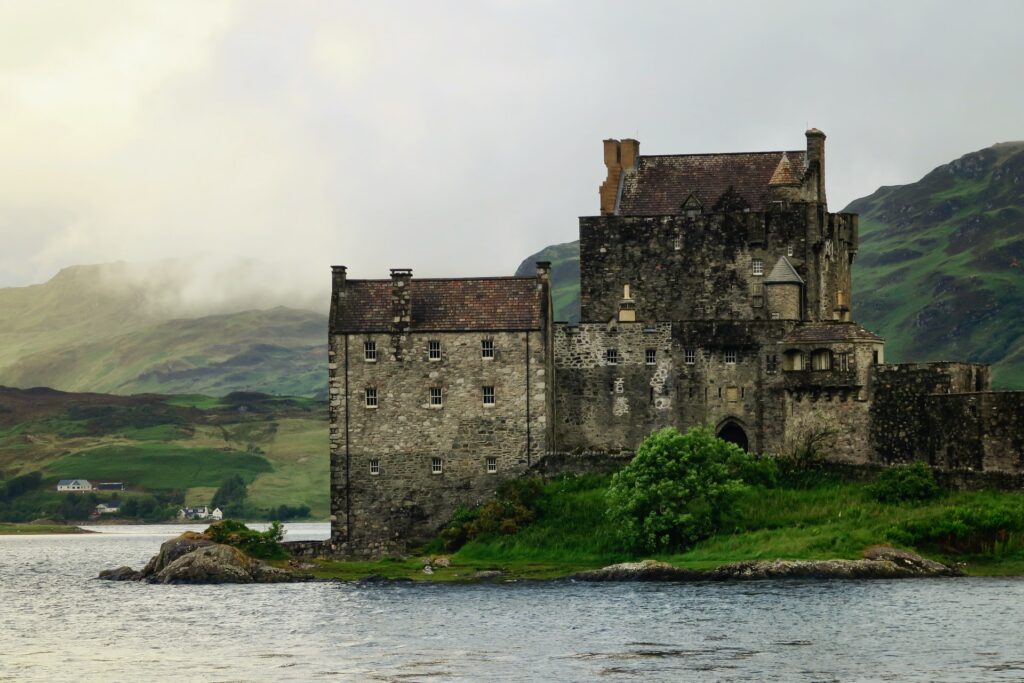
An extended period of intense combat between Scotland and England ended in the invasion of Scotland by the English King Edward I. William Wallace at this time, raised a Scottish army, defeating an English army at the Battle of Stirling Bridge.
He was sentenced to hanging for treason against English, soon after which he attained iconic status. The movie Braveheart depicts the tale, but another interesting fact is that the person whose nickname was Braveheart was not Wallace, instead of Robert the Bruce, was one of the most famous warriors of his generation and eventually led Scotland during the First War of Scottish Independence against England.
Recommended For You – 15 Prettiest Christmas Markets in the UK
SCOTLAND FACTS ABOUT CULTURE
Bagpipes are not initially from Scotland
- I know I mentioned the heart of the Scottish culture, but one of the fun facts about Scotland is that the bagpipes originates from ancient Egypt. After their conquest of Egypt, the Romans adopted the bagpipes as a part of the music culture, making them an essential part of Scottish life.
- New Year’s Eve in Scotland is celebrated as Hogmanay Festival, with its practice considered to be derived from Norse and Gaelic observances of the winter solstice.
- Scottish people are most likely to have blue eyes than any other in the U.K.
- The Scottish poet Robert Burns is one of the celebrated legends in the country. Robert Burns, also known as Rabbie Burns, is the national poet whose works continue to inspire the Scots and others worldwide. Born in Ayrshire, the Scottish poet and lyricist composed many iconic songs, many volumes of impressive literature that Scots refer to in their everyday lives
- His birthday in January is celebrated as the Burns Festival or Burns Night, which is one of the grandest celebrations in Scotland commemorating his life and works.
- Scotland is the land of folklores and mythical creatures. One mythical being that needs a mention is the Kelpie, the shape-shifting water horse or a mystical spirit that dwelled in all forms of water bodies in the Highlands of Scotland.
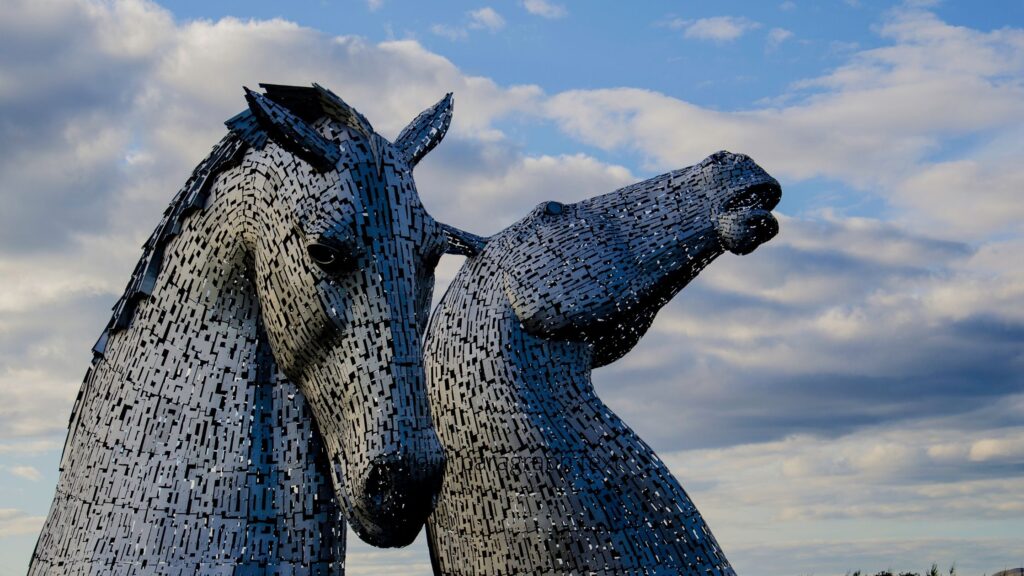
- Regarded as one of the most significant symbols in Scottish folklore, these mythical horses had the strength of ten regular horses and occasionally took the shape of humans.
- If you want to check out the modern-day mythical Kelpies, head to Helix Park near Falkirk, which has stunning exhibits of the tall Kelpies sculpted.
- It was legal for a girl to marry at 12 and a boy at 14 in Scotland until 1929.
Recommended Read: 65 Gorgeous Offbeat Places To Visit In Europe
SCIENCE FACTS ABOUT SCOTLAND
Scotland is where many milestone inventions and discoveries happened in science and biology. Scotland has its share of scientific inventions and discoveries, many of them being milestone revolutionized accomplishments.
- As we all know, Alexander Fleming, born in Scotland, is credited with the discovery of Penicillin, the antibiotics, which has saved countless lives ever since the discovery.
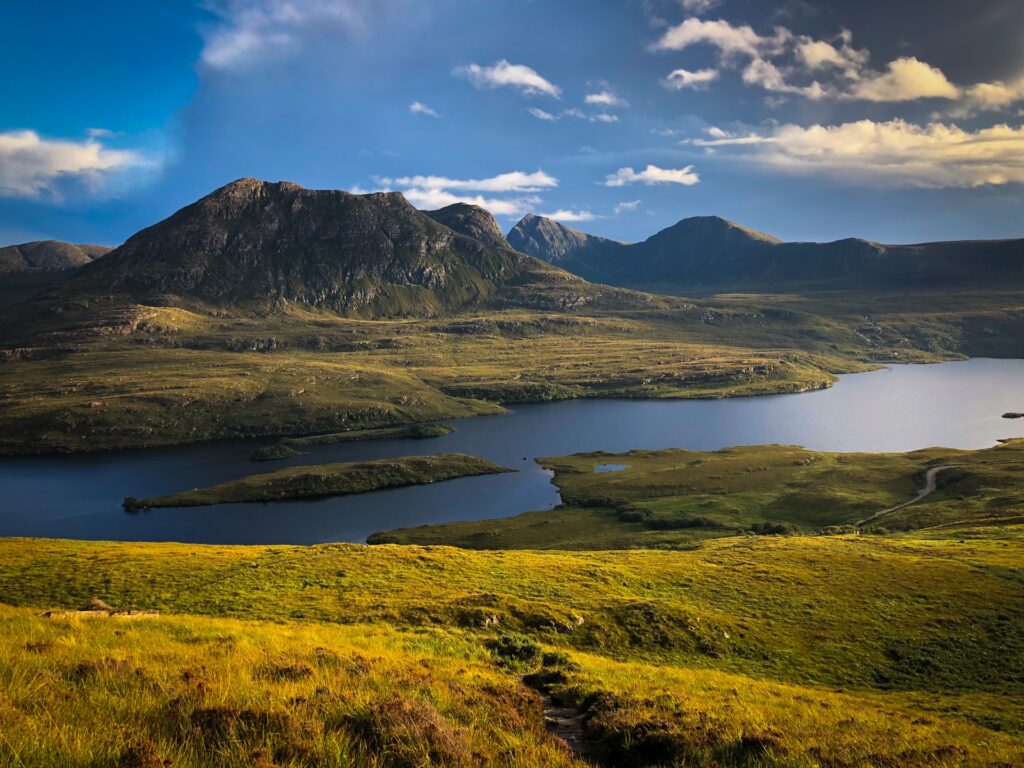
- James Goodfellow OBE is a Scottish man known for the invention of the ATM (Automatic Teller Machine), the chip and the pin concepts that we use almost everywhere today.
- Cloning achieved a milestone when a remarkable experiment conducted in the country resulted in massive success. Dolly the sheep, the first successful lifeform, was created in a lab at Edinburgh.
- Sir James Clerk Maxwell, the founder of modern electromagnetism, was born in Scotland.
- Scottish engineer John Logie Baird created the world’s first T.V. picture on October 2, 1925.
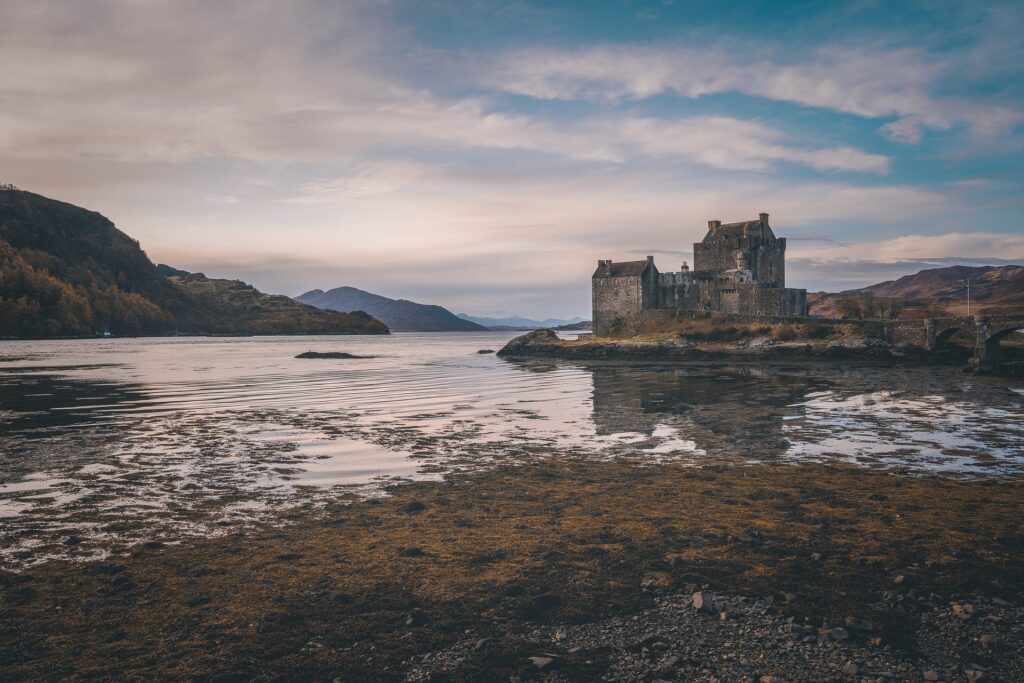
- Ultrasound, which gives peeks into a human body, was first used in a Glasgow hospital in the 1950s to take pictures of a human inside a womb.
- Threads – A company based in Paisley in Scotland was the supplier of sewing thread to about 90% of the world.
- Tourism is one of the primary revenue sources of Scotland, generating over 7 billion pounds and providing employment to hundreds of thousands of citizens.
- 11% of all Nobel prizes have been awarded to people from Scotland.
FACTS ABOUT EDINBURGH
While listing the interesting Scotland facts, you cannot miss knowing about its capital Edinburgh.
- Edinburgh is among the most visited cities in Europe and Scotland as well. Over 4 million tourists visit this beautiful city filled with museums, medieval structures, castles, cafes, and more.
- Edinburgh has more listed buildings than any other city in the world. Listed buildings are those that are marked essential and to be preserved carefully thanks to their historical, cultural, and architectural wonders; Edinburgh is where you should head to for a cultural feast to the senses.
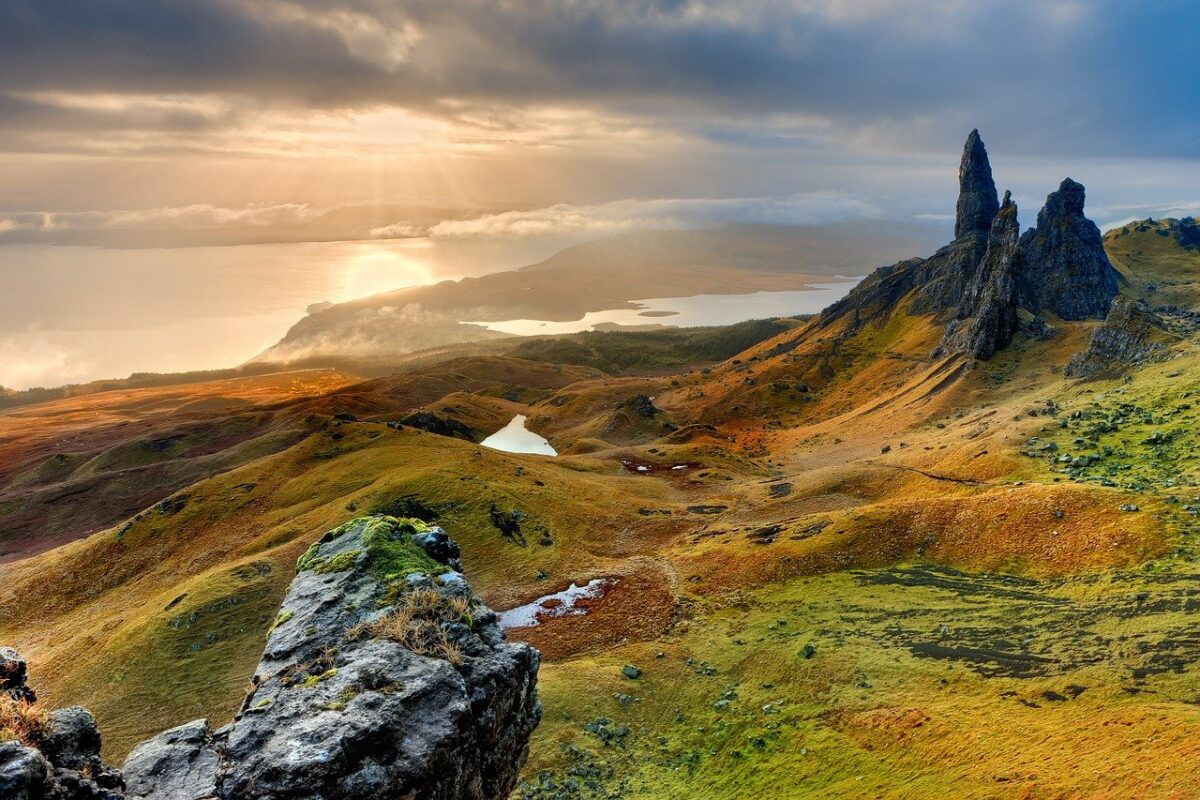
- Holyrood Park, located in Edinburgh, is one of the beautiful parks in the city, home to the landmark Arthur’s Seat, a viewpoint from where you can witness the splendid 360-degree views of the city and beyond. The park is one of the most visited green spaces in the U.K. Also, Arthur’s Seat is located atop an extinct volcano’s remains dating back to 340 million years ago.
- Scotland hosts one of the most significant art festivals in the world – You will love your visit to Scotland if you are here in August to attend The Edinburgh Fringe Festival, one of the world’s largest performing art festivals.
- Since its inception in 1947, the festival has grown tremendously to include over 50,000 artists that perform thousands of shows each year. Over 500,000 people attend the festival held in various venues across the capital of Edinburgh.
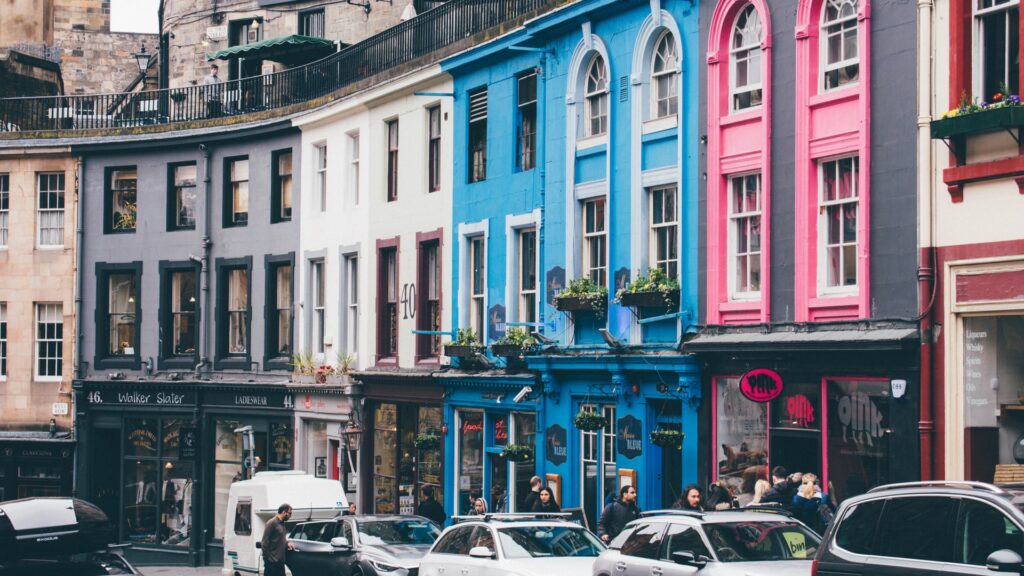
- Edinburgh was the first city in the world to have its fire brigade. Initially, the unit was comprised of volunteer firefighters, which did not help much when the mass fire broke out often or at the same time, which was not uncommon during the medieval periods.
- Edinburgh is sometimes regarded as the Athens of the North. Thanks to its history, medieval architecture, rich culture, and many museums containing prehistoric artefacts, the city earns this name.
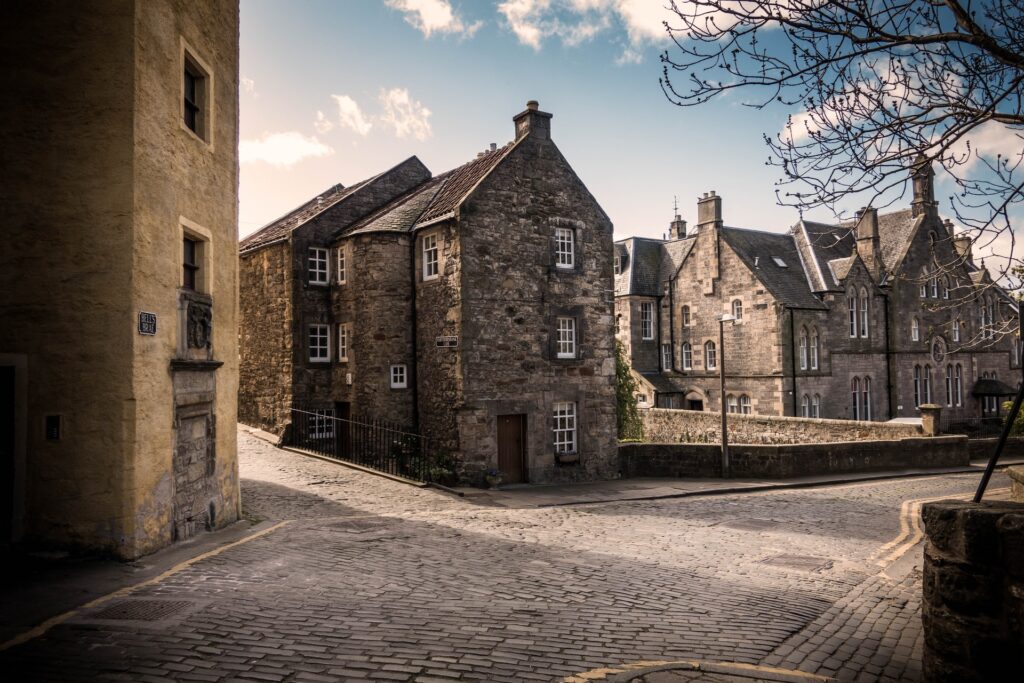
- If you are into ghosts, Edinburgh is the hotspot that you will love. Because one of the fantastic facts about Scotland is that Edinburgh is a top haunted destination in Europe. The city is filled with haunted spots scattered over the city, which you can get to know by joining tours.
- Apart from the famous ghosts, Edinburgh is known for many mythical creatures, including elves, fairies, mythical beasts, and even monster Goblins.
QUIRKY SCOTLAND FACTS
- If you are a nervous flyer like me or do not prefer planes, you will love this one. You can take the shortest commercial flight in the world in Scotland, the Loganair flight from Westray to Papa Westray. The distance is 1.7 miles, and it will take you less than a minute to reach your destination.
The Unicorn is the official animal of Scotland
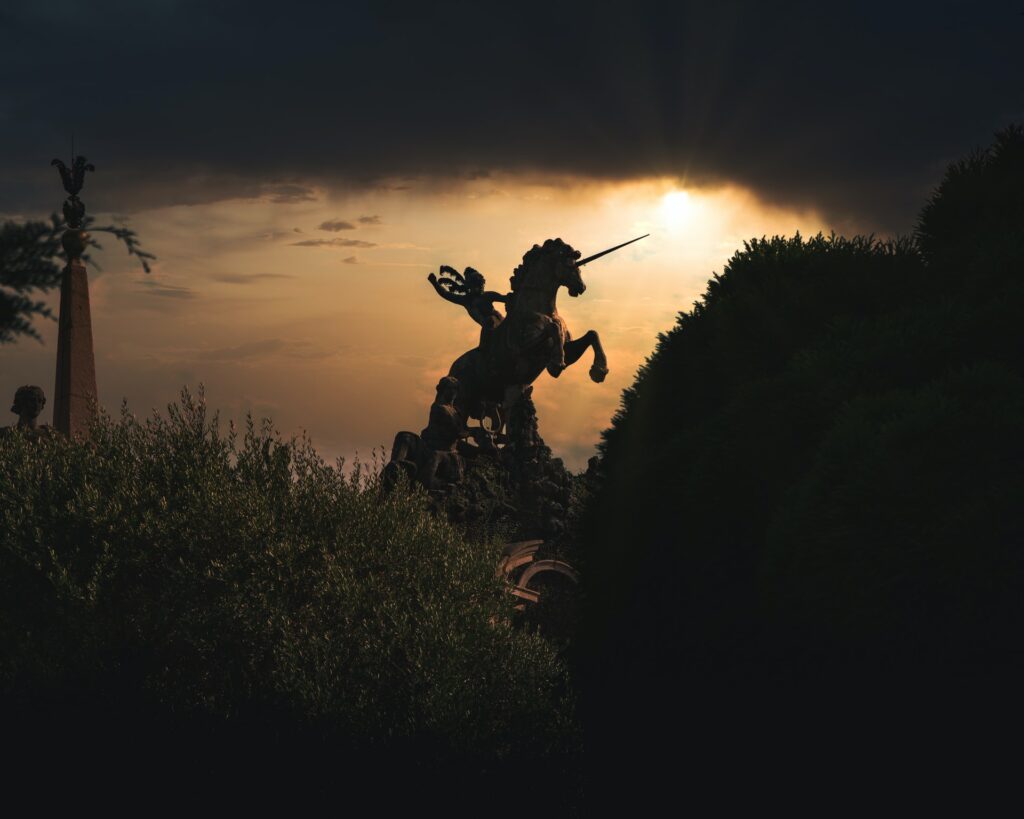
- One of the facts about Scotland that makes love the country furthermore is their national animal is Unicorn. You know that the government is one of the most mystical ones thanks to the mythical beings, but having this magical Unicorn as their national animal makes the country so calm and takes fascination to the next level.
Scots love their dances
- Scots are world-famous dancers, with over 15000 documented types of Scottish country dancing. So the movies that celebrate Scottish dancing reveal one of the fun facts about Scotland’s love for dance. Make sure you pick up a few steps when you are here.
- One of the quirky facts about Scotland that needs to be mentioned is the Grass Market, which is today known for its pretty cobbled lanes packed with antique shops, old medieval buildings, and cute cafes. But the exciting thing is its past. This boutique location once used to be a public hanging spot, where criminals and offenders of all sorts were hanged.
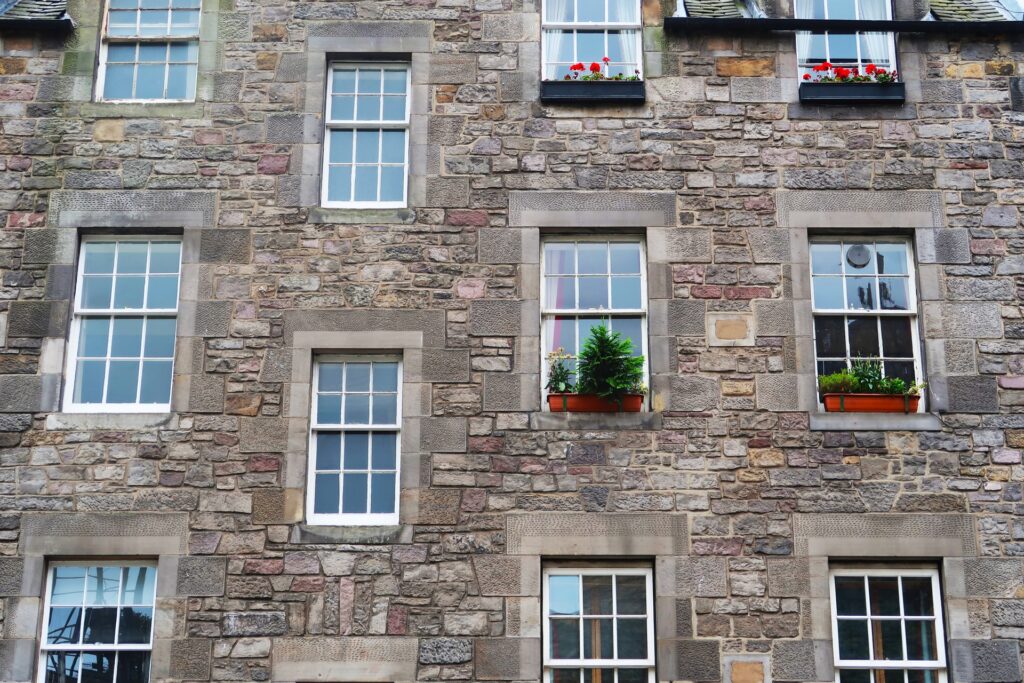
- A legend says that one lady convicted of a petty crime was hanged in the spot where the market lies today, but she was not dead and came back from the coffin. But the law could not attempt another hanging as the punishment had already been served, so she was set free.
- Among the many sports icons and modern-day celebrities originating from Scotland, some noteworthy mentions include the famous tennis player Andy Murray and the Forbes Magazine’s owner Bertie Charles Forbes.
- Fact lovers like me love their bible, the Encyclopedia Britannica. And do you know where it comes from? Yes, that’s right, it was originated in Scotland.
Free water for everyone
- Unlike other parts of Europe(or anywhere in the world) where you pay for drinking water, Scot citizens enjoy drinking water for free.
Scotland is home to many people with Ginger Hair
- Around 2% of the world’s people have red hair. But in Scotland, it is more than 13% of the population, the highest proportion of redheads globally. A genetic trait allows better Vitamin D absorption, an excellent quality given the Scottish weather. So do not be surprised if you notice more ginger heads while you are there.
- When you compare with the other people in the UK, you will also notice that most blue-eyed people are from Scotland.
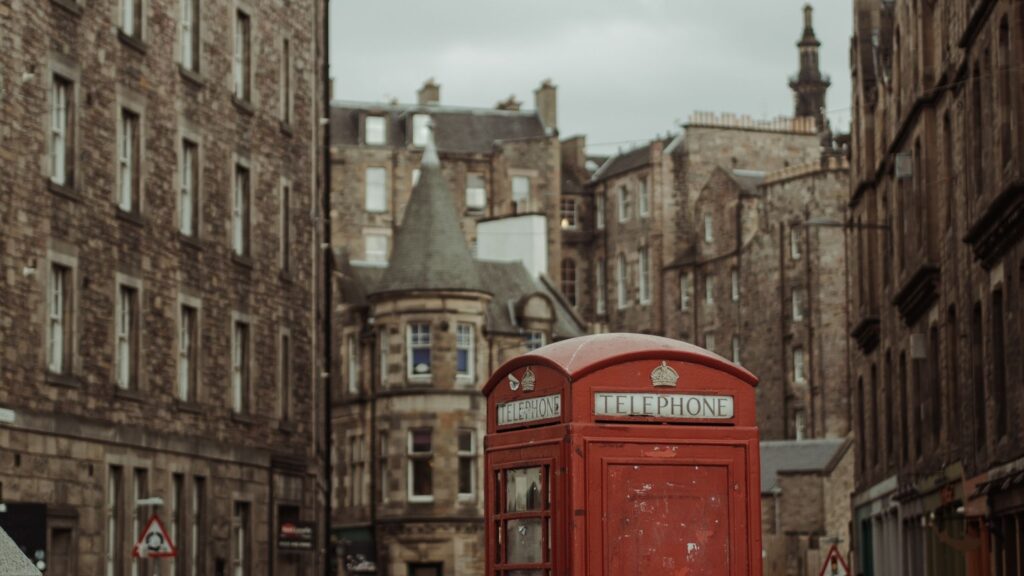
- Scotland is the inventor of the raincoat. The raincoat was invented here by a man Charles Macintosh. Hence, people also refer to the raincoats as ‘Macs’ after his name, even to this day.
- A picture of Tartan Ribbon was the world’s first coloured photograph, taken for the first time in Scotland.
- The Britannia Music Hall, also known as The Panopticon or The Britannia Panopticon, located in Trongate in Scotland, is one of Britain’s oldest remaining music halls.
Dr Jekyll and Mr Hyde
- Want to know where the author Robert Louis Stevenson derived his inspiration for Dr Jekyll and Mr Hyde? It was based on Deacon Brodie, a citizen of Edinburgh, who committed crimes at night and maintained his day profession as a Locksmith.
Robinson Crusoe
- If you love folk and fairy tales, you may know about Robinson Crusoe by Daniel Defoe. The author got his inspiration from a sailor called Alexander Selkirk, who resided at Largo village.
A country with three official languages
- There are three officially recognized languages in Scotland – English, Scots and Scottish Gaelic. Scottish Gaelic is an ancient Celtic language that emerged from Old Irish, and Scots is a Germanic language similar to English but still considered a different language.
Scotland is full of Lochs
- There are over 30,000 freshwater lochs in Scotland, but most fall under the subcategory, the smaller ones being known as lochans. The five largest are the most famous and draw many visitors – Lochs Ness, Shiel, Morar, Awe and Lomond. They also are accountable for containing one-third of the total water volume.
But the deepest loch in Scotland is not Loch Ness.
- Everyone knows about Loch Ness and its monster, but here is one of the surprising facts about Scotland waterbodies. The deepest Loch is Loch Morar, which runs down over 300 meters and is also the seventeenth deepest lake globally.
- The longest Noch in Scotland is Loch Awe.

- In terms of surface area, the largest Loch title in Scotland goes to Loch Lomond.
- The first international Rugby match in the world was held in Scotland.
- If you are a Batman fan, then you know all about Joker. But did you know that the scar on his face is called the Glasgow smile? It originated in Scotland and was quickly adopted by English street thugs.
The Land of Rich Smugglers
- Thanks to its extensive sea connections, smuggling was one of Scotland’s top crimes for many centuries. Many smugglers went on to become super-rich, joining the elite class in the country.
- John Nisbet is regarded as a very smart smuggler who became one of the wealthiest merchants, and he even bought a beautiful mansion overlooking the Eyemouth Bay.
The USA has many Scottish people
- One of the surprising facts about Scots is that you will find almost as many people in the USA originating from Scotland as there are in Scotland itself. The number of Americans of Scottish descent is estimated to be over 25 million, more than the population of Scotland, which is around 5.5 million.
- Also, 61% of American Presidents are of Scots or Scots-Irish descent.
Scotland has the tallest rotating structure in the world
- If you visit Glasgow, do not miss seeing the famous Glasgow Science Centre, an excellent centre with many things to explore. But notably, it is home to the pretty Glasgow Tower towering the skyline at 127 metres, making it the tallest fully-rotating structure in the world.
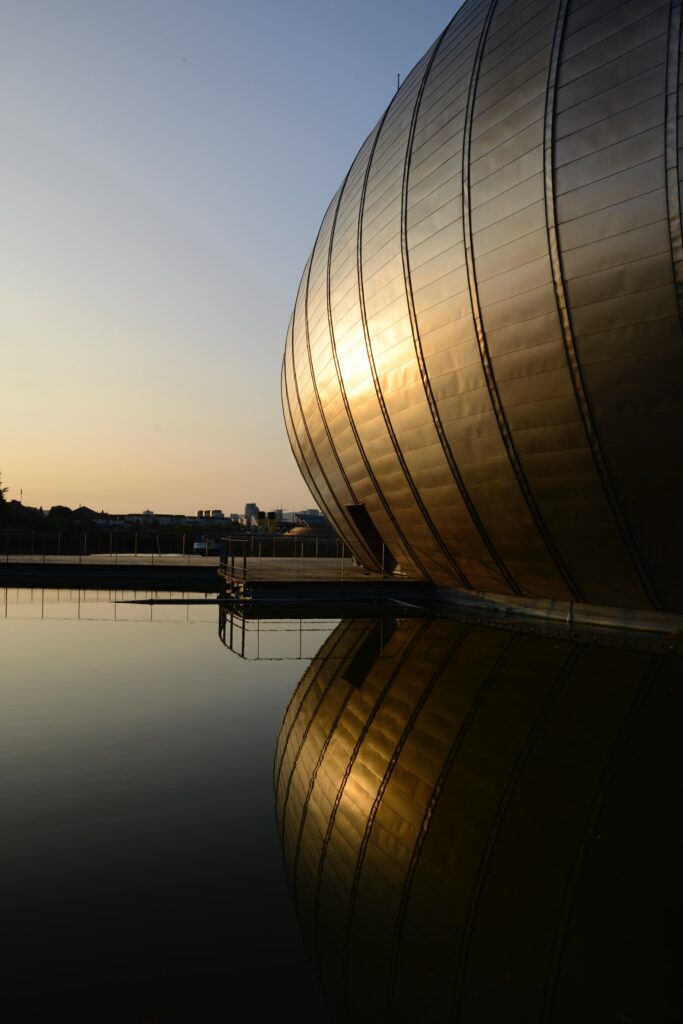
Highland Games is Worth Attending
- One of the ancient games popular among the clans that still draws many visitors is the Highland Games, which dates back to the 11th century. The contestants show off their skills at the most exciting games, like caber tossing, which involves throwing a colossal tree trunk, hammer throw, and even plays with haggis.
Scotland takes their Football Games Seriously
- They say you identify a true Scot by their love towards Whiskey and Football. Did you know? Scotland was the venue for the first-ever international association football game, held between Scotland and England in 1872. It was played on a Cricket ground, the West of Scotland Cricket ground in Partick. Football is the national sport of Scotland.

- The Scots love for football did not happen until a long time since King James had it banned during his reign. Maybe that’s why when the game got introduced, the Scots embraced with such admiration.
- The world’s oldest football, dated to the early 1500s, and was found in Stirling Castle.
Scotland houses the largest public library in Europe
- I can spend weeks in a library if someone lets me. If you belong to the same category, you will love visiting The Mitchell Library located in Glasgow, the largest public library in Europe.
- Inchindown tunnels in Scotland were one of the Allies’ primary WWII fuel-storage facilities, located near Invergordon in Ross-shire. Today, the tunnel is known for the longest echo generated inside an artificial structure. A record-breaking 112-second echo was heard when some researchers from Salford University fired a gun down the tunnels.

- Interested in spotting UFOs? Then make yourself at home in the small town of Bonnybridge in Scotland. With the city consistently recording at least over 300 sightings of Unidentified Flying Objects reported every year, it has earned the nickname, the UFO capital of the world.
- Scotland is home to one of Britain’s oldest banks, The Bank of Scotland, set up in 1695.
- The largest city in Scotland, Glasgow is home to more than half a million people. The city is too big for commuting, but you have it all sorted thanks to the third-oldest underground railway in the world, the subway in Scotland that has been helping its citizens get around since 1896. Also, Glasgow has the only subway system in Scotland.
INTERESTING FACTS ABOUT SCOTLAND HISTORY
Not many know that the Scotland we know today has had undergone many transformations and bears a long line of history, like its many counterparts. This section, bringing you some exciting Scotland facts about ancient history.
- Scotland remains one of the richest archaeological sites, a treasure house for many geologists, historians, and excavation enthusiasts. Because it is here that some of the world’s oldest evidence leading to the existence of human lives have been discovered, some of the excavations have uncovered human remains dating to more than 15000 years, indicating the presence of civilizations after the ice age.
- The Gaelic name for Scotland is ‘Alba‘, named after the Kingdom of Alba which existed until the 11th century.
Scotland and the Clan System Go Long Back

- The earliest known records of the existence of the clan system in Scotland dates back to the 1200s. A chief usually maintained the authority of the area in which a clan lived. Each clan had its unique dress colours, festivals, languages, and customs. Even today, people identify the lines based on the kilt colours, which is in thousands.
- There were four different kingdoms in ancient Scotland – Angles, Britons, Picts and Gaels. Although they had a foreign language, they connected through Latin, the commonly spoken tongue since the 6the century.
- Kenneth McAlpin is considered the first king of Scotland, who was coronated in AD 842. But later on, it was discovered that he only ruled the region north of the River Forth. The actual first king of the country was Donald II.
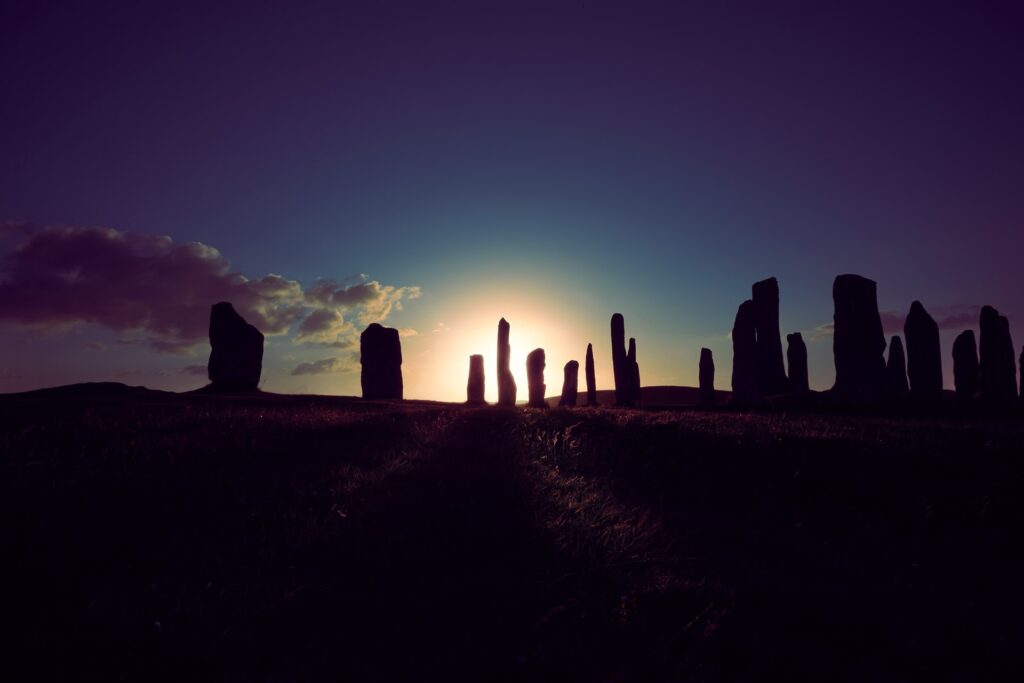
- You may know very well about Stonehenge in England, but Scotland is filled with hundreds of standing stones and stone circles scattered around the world. Little is known about their origin or purpose even to this day.
- One of such most famous landmarks is on the Isle of Lewis, The Calanais standing stones, which is believed to be more than 5000 years old, far older than the stones at Stonehenge.
- Scotland has one of the earliest remains dating back to the Neolithic age, Skara Brae, a village on Orkney Island, off the northern coast of Scotland.
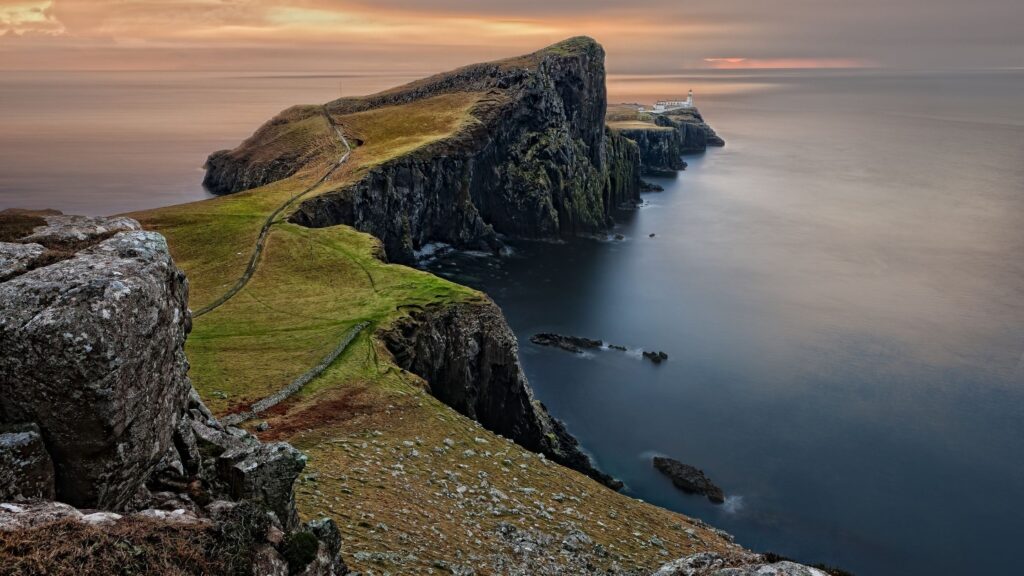
- The village dated back to 3180 BC and was a community for over 600 years, making it older than the pyramids of Egypt. The unique turf houses are dug into the earth and blanketed by stones for warmth and protection from wild animals, with a rooftop made of dried grass. Skara Brae was only discovered in 1850 after a storm cleared the site from the heavy layers of sand.
- The Knap of Howar, located on the island of Papa Westray in Orkney, Scotland is the oldest preserved stone house in northern Europe. It is a Neolithic farmstead whose Radiocarbon dating shows that it was occupied from 3700 BC to 2800 BC, earlier than the similar houses in the settlement at Skara Brae on the Orkney Mainland.
- The remains of a settlement dating to over 9000 years exist in Cramond near Edinburgh. Evidence indicates that the community that inhabited this place were the earliest resident hunter-gatherers found in Scotland.
- More of the Roman past can be found in Bearsden, located in Glasgow, where you can find an ancient bathhouse built by them.
- One of the most powerful kingdoms in Europe, the Roman Empire endured excellent resistance to secure Scotland. The ancient Scotland tribes fought fiercely against the Roman army. They built high walls and fortresses at a very efficient speed, restricting the invasion. You can find the ruins of forts even today in many parts of the country, the most famous ones being the Antonine Wall and Hadrian’s Wall.

- Sanquhar, a village in Scotland located on the River Nith in Dumfries and Galloway, is home to a post office established in 1712, the oldest working post office in the world.
- Just like the country itself, which is unique, the law system has a diverse history. The earliest method of laws in Scotland was practised in remote regions like Shetland, where the law system of Norway was adopted.
- Current laws in the country have been adopted from the British as well as the Scottish. However, the Scots law themselves have been originated from the Romans.
- Scotland’s oldest museum is The Hunterian Museum, built in 1807. Located inside the University of Glasgow, it is surprisingly one of the offbeat museums
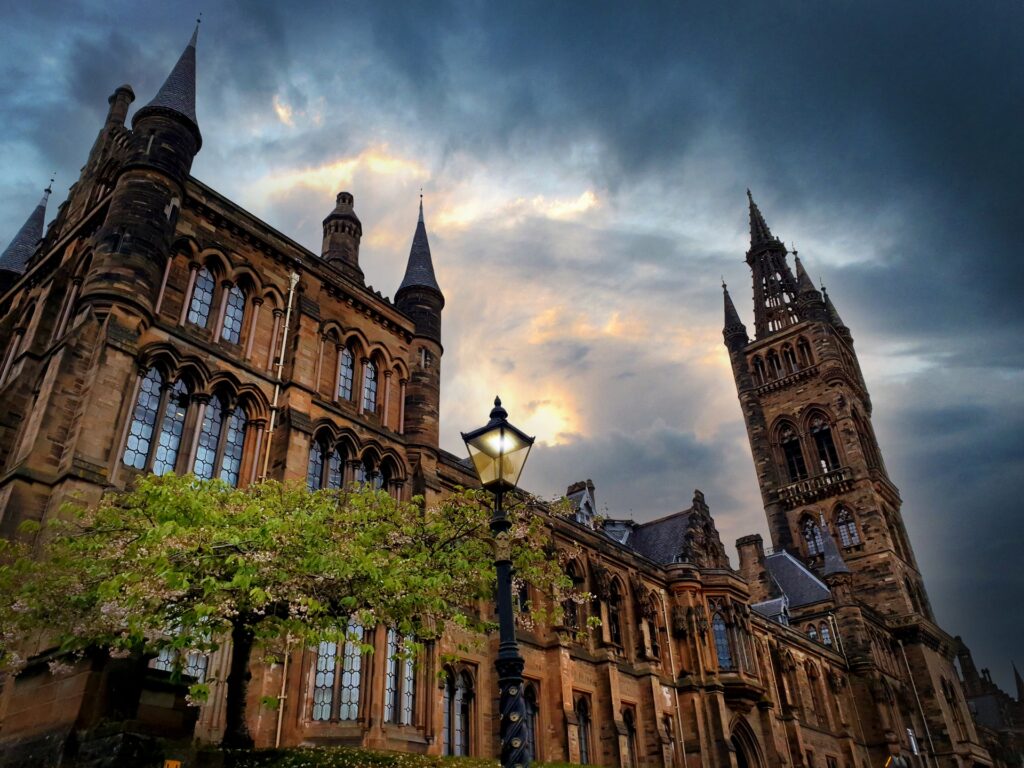
- Europe boasts of some of the oldest universities in the world. And Scotland is home to two of them.The University of St. Andrews, which was founded in 1410 also among the earliest known institutions.
- The 4th-oldest, The University of Glasgow, established in 1451, has many legends as its proud alumni, including Lord Kelvin and Adam Smith.
FACTS ABOUT SCOTLAND GEOGRAPHY
Here are some fun Scotland facts about its geography that you will love.
The Second Largest Country
- Scotland is still just one-third of the whole of the UK, located on the edge of North Europe.
- After England, Scotland is the second-largest country in the U.K.
- Scotland is made up of approximately 790 islands. But interesting Scotland fact to note here is that 660 of those are uninhabited.
- Although its latitude is similar to that of Moscow, the weather in the country is relatively warmer due to the North Atlantic Drift Gulf Stream). It lies between 55 and 60 degrees north, with central Scotland on approximately the same latitude as Moscow, though warmer because of the North Atlantic Drift Current (Gulf Stream).
- It has been discovered that the landmass that currently forms a part of Scotland was located close to the South Pole billions of years ago.
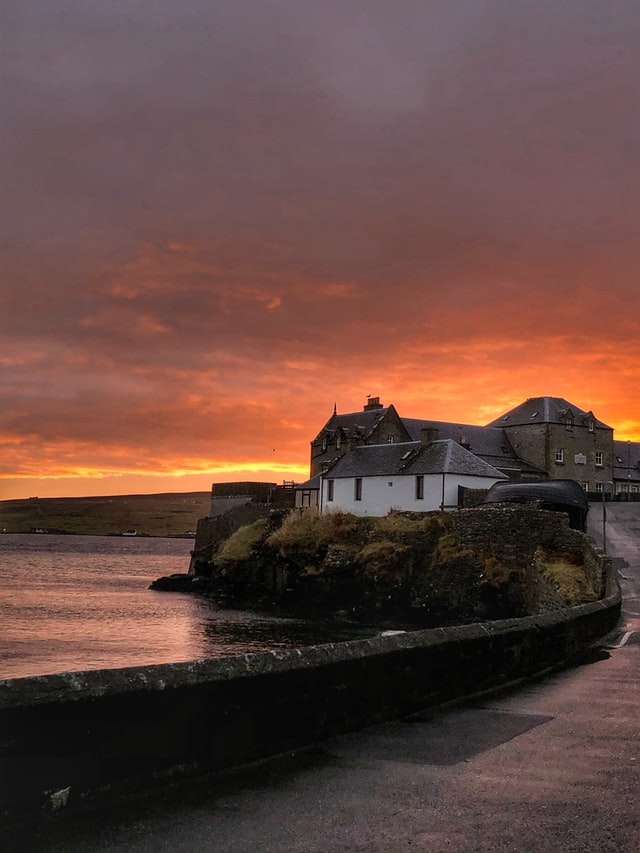
- The continental drift that resulted in the locations of the present world as we know it also indicates that Scotland has one of the oldest geological histories, with some sections of the country’s land comprising rocks going back to over 3 billion years.
- Among the islands, the furthest and the most northern is the Shetland Isles, short for Shetland.
- Shetland is closer to Norway than to England. It takes far lesser time to reach its capital Oslo than to arrive in London.
- Shetland Isles and the Orkney Islands once belonged to Norway.
- Shetland is also closer to the Arctic Circle than to the south of England.
- Scotland’s geography is divided into three regions, The Upper Lowlands, The Central Lowlands, and The Highlands & Islands.
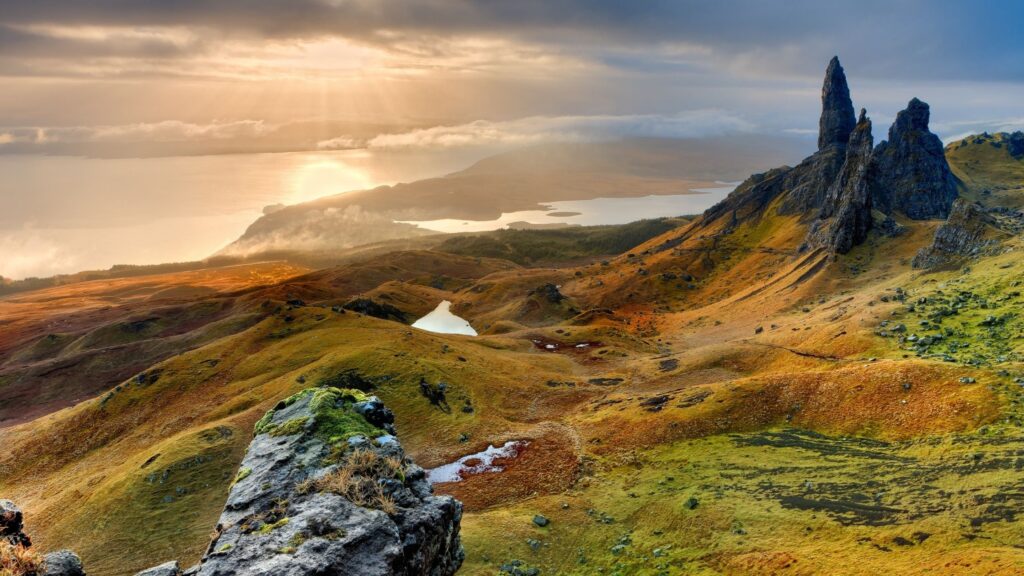
- The Upper Lowlands lies just north of the UK/Scotland border, comprising of rolling hills, agricultural farms and pasture fields.
- The Central Lowlands is home to the urban part of Scotland, home to cities like Glasgow and the capital Edinburgh, and obviously, the most densely populated region.
- The Highlands & Islands – Although about 50% of Scotland comprises the Highlands and the Islands, it is the least inhabited. It is known for its rugged landscapes, dramatic mountainous terrains, cold lochs, stunning cliff tops and surreal coastal lines.
- The Lowlands and the Highlands are separated by a huge Highland Boundary Fault. Hence the Lowlands in the south is relatively flat, while the Highlands, the more famous region, is packed with spectacular rugged mountainous landscapes.
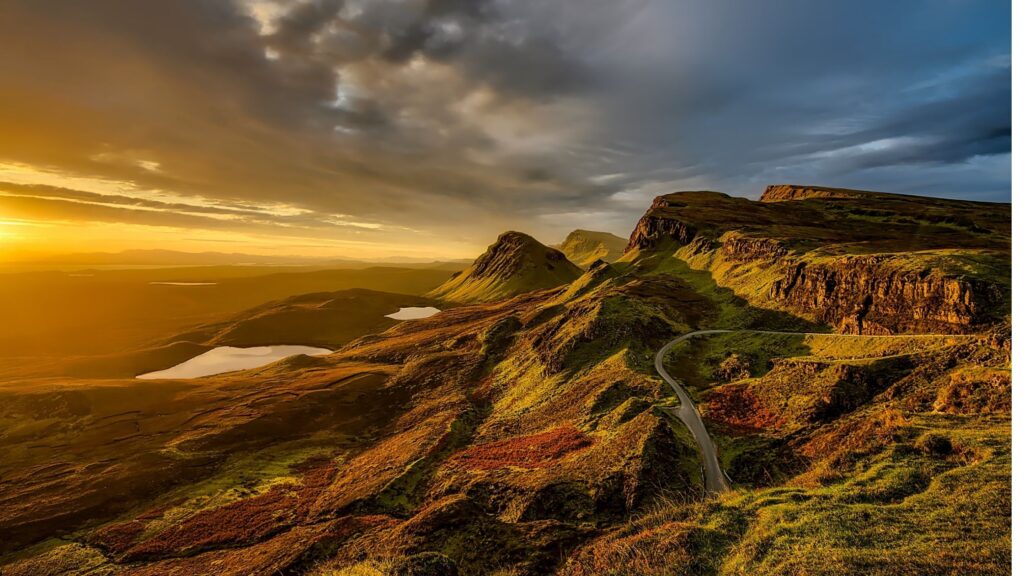
- Speaking of the stunning Scottish Highlands, it is home to the highest mountain in Britain, Ben Nevis. Located At 4,413 feet and the remains of a volcano making the mountain, it is one of the busiest mountain peaks with hikers trying to attempt the summit, especially in summer.
- Surprisingly, agriculture is one of the most significant occupations in Scotland, with around 10% of rural Scots engaging in farming of some sort.
- Wanlockhead, located at over 420 meters in the Lowther Hills, is the highest village in Scotland. And yes, it is not in the highlands as anyone would expect.
- The longest river in Scotland is the River Tay, flowing for over 125 miles.
You can witness the spectacle of the Northern Lights
- In many parts of Scotland, you can witness the stunning formations of the Aurora Borealis if you are here in winter, especially during late February.
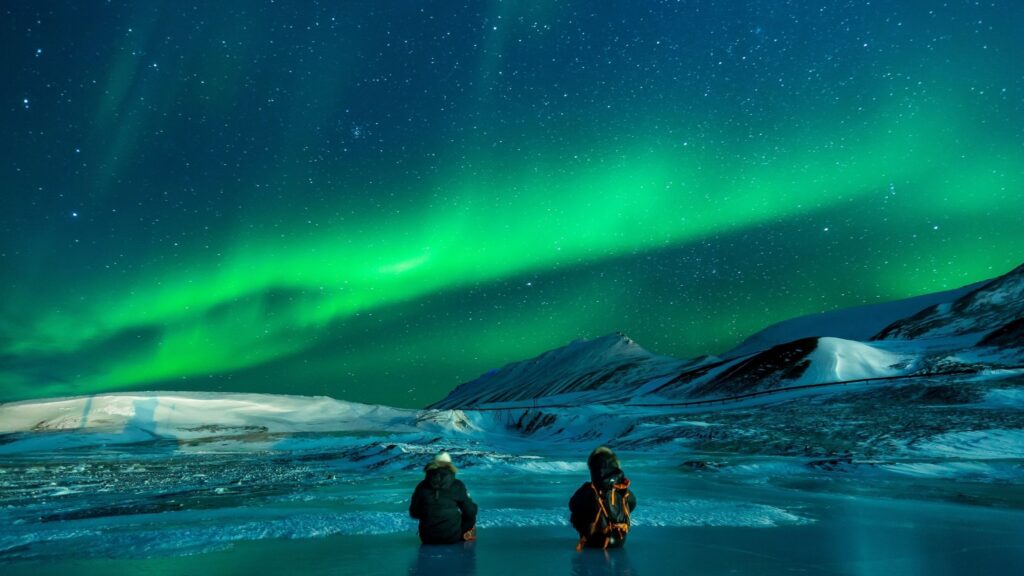
Meet Am Fear Liath Mòr
- The second highest mountain in Scotland is Ben Macdui, at over 1300 meters in height. However, the mountain is infamous for its inhabitant Am Fear Liath Mòr, which is the name for a presence or creature. He is said to haunt the summit and passes of Ben Macdui, the highest peak of the Cairngorms. This bigfoot, also called the Grey Man of Ben Macdui, indeed makes an eerie presence in the trekker’s mind, even if they do not spot it for real.
Recommended read: Interesting Facts About Rome You Should Check Out
MORE AMAZING FACTS ABOUT SCOTLAND WILDLIFE
Below are some exciting things to know about Scotland’s stunning natural beauty and its rich wildlife.
Home to Britain’s Highest Waterfall
- Eas a’ Chual Aluinn, at over 700 feet, is the tallest waterfall in Great Britain. And its height is more than many other world-famous waterfalls, including the Niagara, which is 1/3rd of Chual Aluinn.
Glasgow is a green city
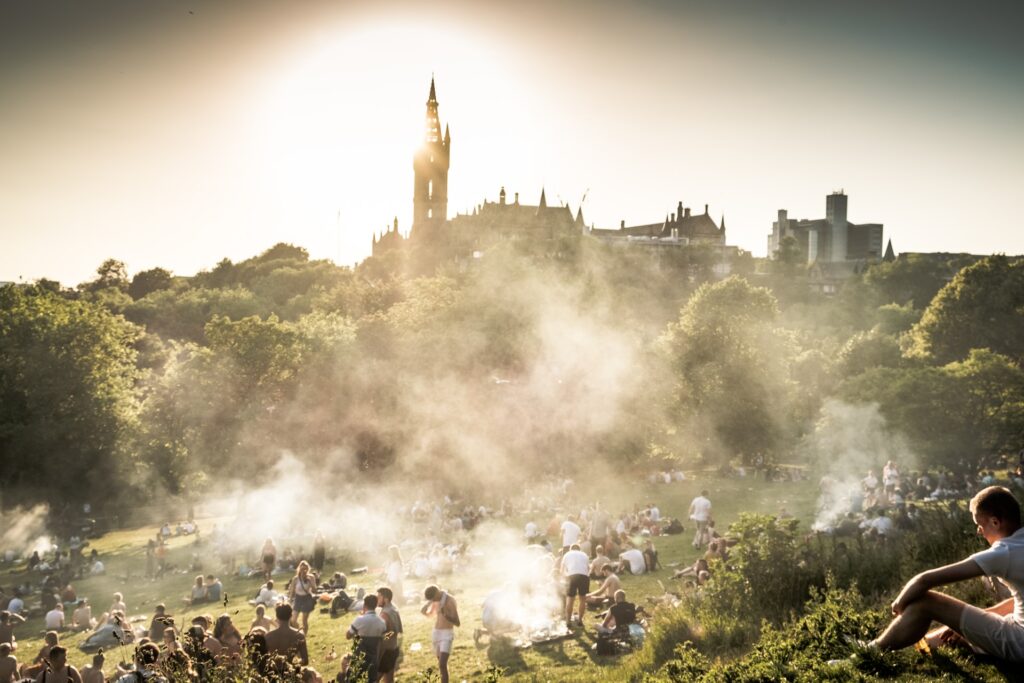
- Glasgow is one step further when it comes to being green. The city has the highest number of parks in Britain, and also obviously, tons of more trees than elsewhere in the UK.
- Speaking of older trees, head to Victoria Park in Glasgow to check out the Fossil Grove, comprising of roots of trees dating to more than 300 million years.
- If you love dolphins, plan a trip to the beautiful Moray Firth located near Inverness. Along with exploring medieval homes, castles, and rugged coastline, you will surely spot plenty of bottlenose dolphins, the only place where you can find them in Britain.
- Some of Scotland’s unique wild animals are puffins along the coastline, feral cats from the Highlands, the adorable red squirrels found in the forests, dolphins, Red Kite, Seals, Whales, Golden Eagle, and Red deer. Check out some interesting facts about Scotland animals below.
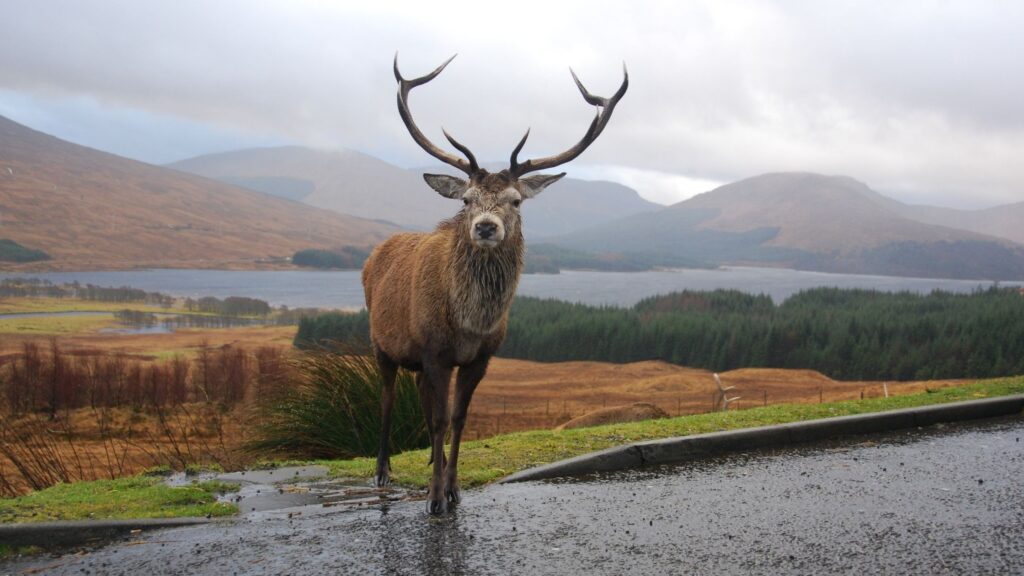
- The country is home to one of the world’s oldest trees – Fortingall Yew, which is estimated to be at least 3000 years old.
- Scotland is also home to the tallest hedge in the world. Located near Meikleour on the A93 Perth-Blairgowrie road, you cannot miss this mammoth hedge over 1,700 feet in length and 100 feet high.
- Weighing more than 500 pounds and over 4 feet high, the majestic looking Red deer are one of Scotland’s largest land mammals, which also are the largest among the UK’s deer species. Also, Red deer is one of the oldest mammals dating back to at least 10,000 years, making them more fascinating.
- The stunning sea eagle with its wings spanning over 8 feet is one of Scotland’s specialities among the birds. It is the largest bird in the United Kingdom, and if you head to the west coast islands, you will spot many of them.
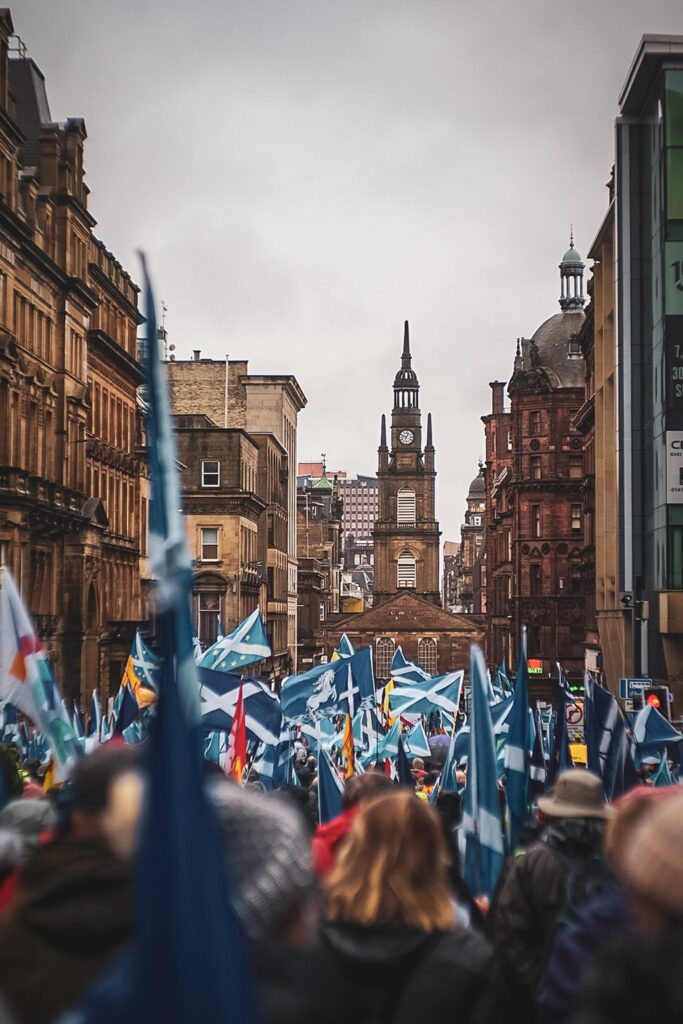
That’s about the interesting facts about Scotland. Hope you enjoyed getting to know various fun Scotland facts about science, culture, history, and more. If you have any more to add, do share in the comments below. Also, if I have got any facts incorrect, do let me know that too.
- Your Ultimate Guide to the Best Things To Do in Krakow, Poland - April 12, 2024
- Exploring the Hidden Gems of European Ski Resorts - March 28, 2024
- 25 Beautiful Landmarks In Poland For Your Bucket List - March 16, 2024




